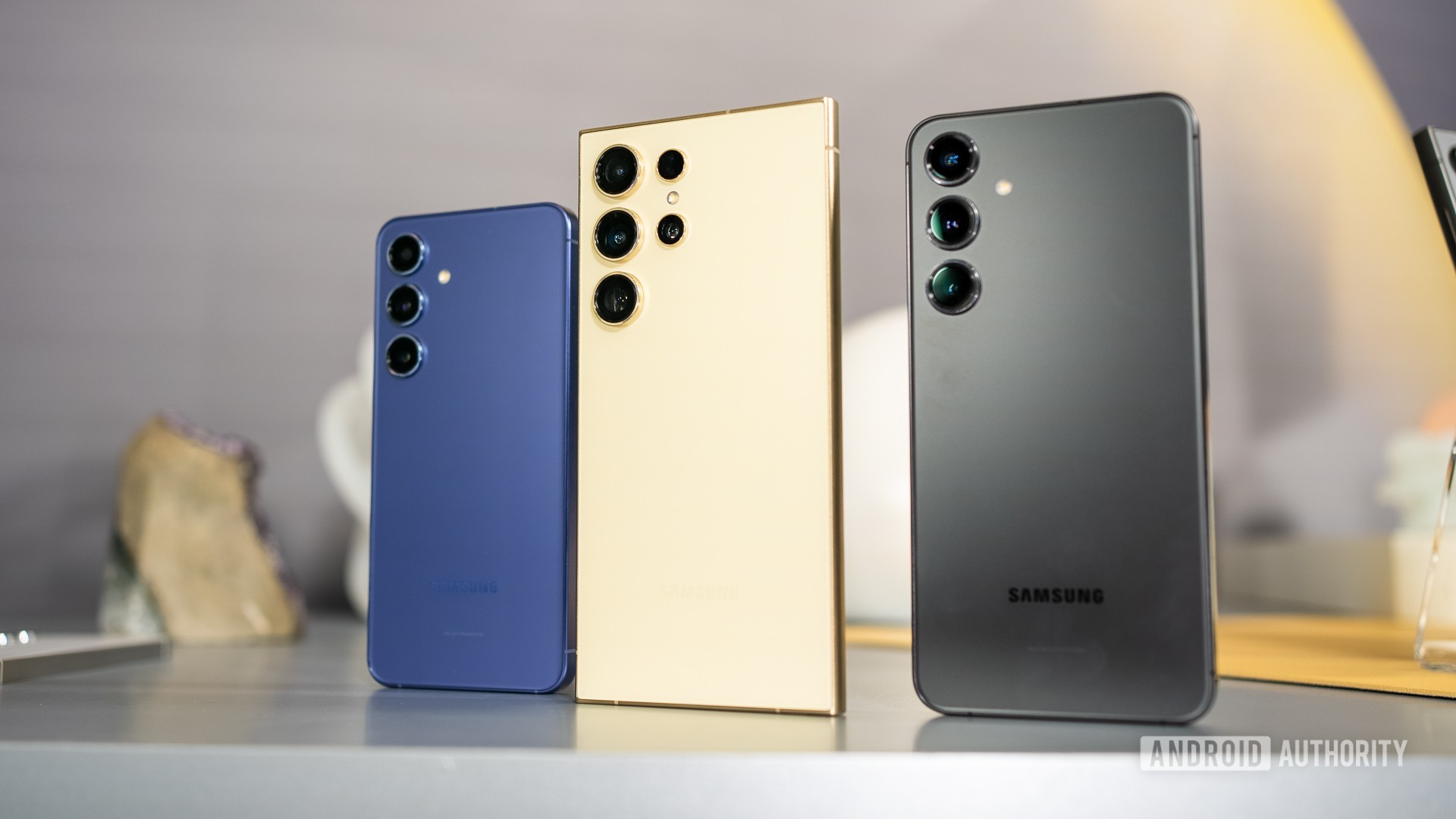In 2024, it can be hard to pick the right smartphone because there are so many to choose from, and each one has its own features and functions. Here is a list of some of the best smartphones of the year to help you choose the right one for you:
Key Features of the Samsung Galaxy S25 Ultra:
6.9-inch Dynamic AMOLED screen 2X, frame rate of 144Hz
Exynos 2300 or Snapdragon 898 processor
The camera has four sensors: a 200MP main sensor, a 50MP ultra-wide sensor, a 12MP telephoto sensor with 10x optical zoom, and a 3D depth sensor.
It has a 5,500mAh battery and can be charged quickly with 65W or wirelessly with 30W.
Android 14
Pros:
The camera works really well, especially when zooming in and when there isn’t much light.
A big, bright screen with a fast refresh rate makes scrolling and games smooth.
The battery lasts a long time and can be charged quickly.
Samsung DeX lets you use your phone like a PC.
Not so good:
Price point goes up.
Size might be too big for some people.
This phone is perfect for people who want a great camera, a big screen, and long-lasting battery life, especially for work and watching videos.
What’s New in the iPhone 14 Pro Max?
The screen is a 6.7-inch Super Retina XDR screen with ProMotion technology and a frame rate of up to 120Hz.
A17 Bionic chip is the processor.
Triple 48MP cameras and a powerful LiDAR scanner make up the camera.
The battery is 4,300mAh and can be charged quickly (30W) or wirelessly (20W).
iOS 18 Pros:
With the newest A17 Bionic chip, performance is smooth and quick.
Great quality photos and videos, even when there isn’t much light.
Strong privacy features and a safe environment that gets updates often.
It has a sleek appearance and is built to last.
Not so good:
Not as many modification options as Android.
No way to add more storage space.
Ideal for: Apple fans who care about photography and videography and value ecosystem integration, high-end style, and reliable performance.
Key Features of the Google Pixel 9 Pro:
6.8-inch QHD+ OLED screen with a 120Hz response rate
Processor: Tensor G3 from Google
Triple-camera setup with a 50MP main sensor, a 48MP telephoto sensor, and a 12MP ultra-wide sensor
5,000mAh battery that can be charged with 45W or 30W wirelessly
14 Pros: OS: Android 14
A clean and easy-to-use Android experience with changes that you can count on.
Great performance from the camera, especially when it comes to computational photos.
A panel that is smooth and has a high refresh rate.
Google Assistant inclusion makes work easier.
Not so good:
Not many storage choices are available.
It might not have all the advanced customizing options that other Android devices have.
Ideal for: People who care about picture quality, clean software, and Google services that work well with it.
Key Features of the OnePlus 11T:
6.7-inch Fluid AMOLED screen with a 120Hz response rate
Chipset: Snapdragon 898 Plus
The camera has three parts: a 64MP main sensor, a 50MP ultra-wide sensor, and an 8MP zoom sensor.
The battery has 5,200mAh and can be charged quickly with 80W or wirelessly with 50W.
Android 14 and OxygenOS are the OS.
With OxygenOS improvements, speed is quick and smooth.
Great battery life, and it can be charged very quickly.
Bright screen with a fast update rate.
Compared to other top models, the price is fair.
Not so good:
The camera might not be as good as those on other top-of-the-line phones.
When compared to Google and Apple, software changes may happen less often.
Ideal For: People who want a good mix between performance, battery life, and value without giving up fast charging or a good screen.
Key Features of the Xiaomi Mi 15 Ultra:
6.81-inch AMOLED screen with a frame rate of 144Hz
Processing speed: MediaTek Dimensity 9000+
Camera: It has four cameras: a main camera with 108MP, an ultra-wide camera with 40MP, a telephoto camera with 20MP, and a TOF 3D depth sensor.
Battery: 5,000mAh, can be charged with 120W or 50W wirelessly
The OS is Android 14 and MIUI 16.
Great value for the money, and the specs are top-notch.
A beautiful screen with a fast update rate for smooth use.
Both wired and wireless choices for charging very quickly.
High-resolution sensors in a flexible camera setup.
Not so good:
People who like stock Android might not like MIUI.
Compared to other flagship names, the build quality and software optimization may not be the same.
Ideal For: People on a tight budget who want cutting-edge features, like fast charging and a high-refresh-rate screen, with a camera that performs well.
In conclusion
Ultimately, picking the right smartphone rests on what’s most important to you, whether that’s the camera quality, the operating system you like, the display specs, or your budget. Each of these top smartphones of 2024 has its own benefits, so think about how you normally use your phone and what you need to make an informed choice that fits your tastes and way of life.

